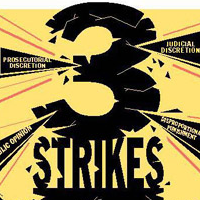Law that Eased 3 Strikes Is Being Implemented Slowly and Unevenly Across the State

When California passed Proposition 36 last November, easing the harshness of its three-strikes law, the Legislative Analyst’s Office predicted that its effectiveness at reducing prison overpopulation, saving money, limiting overzealous incarcerations and freeing unjustly imprisoned individuals would depend on how the law was implemented.
An analysis of data from the Department of Corrections and Rehabilitation by the Associated Press has found the application of Prop. 36 to be slow and uneven, at best.
After five months, the law, which was approved by a majority of voters in every county, has resulted in only 16% of 2,847 eligible inmates being resentenced. The rate of resentencing varies wildly from county to county, where inmates apply for release based on where they committed their last crime.
Tulare County has resentenced 67% of its 42 eligible prisoners while Stanislaus County has resentenced just 4% of its 50 inmates. San Bernardino County, which has the second-largest number of eligible inmates, resentenced one-third of its 291 prisoners. Only 6% of the 1,300 eligible inmates in Los Angeles and San Diego counties were resentenced.
The Wall Street Journal reported in late March that only 19 of 1,200 petitioners in Los Angeles County had been resentenced. The newspaper found that 121 of the state’s 223 sentencings statewide, at that point, had occurred in just four the state’s 58 counties, Kern, San Bernardino, Riverside and Orange.
The Associated Press said defense attorneys and inmate advocates blame county prosecutors who don’t like the new law for purposely gumming up the works by requiring hearings even when case files indicate that a prisoner is eligible for resentencing.
Prosecutors argue that they don’t want dangerous, violent people let back on the street without due consideration of the facts. Last month, a three-judge appellate court tossed out a decision by Los Angeles Superior Court Judge Cynthia Ulfig that had reduced the sentence of Steven Joseph Kaulick and made him immediately eligible for release. Kaulick’s first two strikes included a conviction for punching, strangling and threatening to kill his father and his third strike was for being convicted of falsely imprisoning a woman he was accused, but not convicted, of trying to rape in his home.
Proposition 36 received 68% of the votes cast last year, nearly as high as the 71.8% that passed the three-strikes initiative in 1994, the strictest in the nation at the time. Proposition 184 dictated that the penalty for a second felony be doubled if the first one was serious or violent. A third felony carried a mandatory prison sentence of 25 years to life. Third-strike sentences have been issued for non-violent crimes as minor as stealing a dollar in loose change from a car and cigarettes from a convenience store.
The November revision requires that an offender with two or more serious or violent felony convictions but whose third offense is not serious should only receive a sentence twice as severe as currently required, rather than 25 to life. The initiative applied retroactively to those already in prison (with a few more restrictions) and directed the courts to review those cases.
Besides the obvious humanitarian impetus to implementing Prop. 36 quickly, the state is facing increasing pressure by federal courts to reduce its prison population. Governor Jerry Brown’s administration reluctantly submitted an “ugly” plan to the courts last Thursday for further reducing overcrowded prison conditions that have been linked to miserable physical and mental health problems. But even that plan doesn’t fully explain how the state can hit the court-ordered levels.
–Ken Broder
To Learn More:
New “3 Strikes” Law Varies by County (by Paul Elias, Associated Press)
“Three-Strikes” Prisoners Drawing a Walk (by Erica E. Phillips, Wall Street Journal)
Court Blocks Release of Three-Strikes Inmate (by Jack Leonard, Los Angeles Times)
Judge Orders Release of First Inmate under New Three-Strikes Law (by Ken Broder, AllGov California)
Three Strikes Project (Stanford Law School)
- Top Stories
- Controversies
- Where is the Money Going?
- California and the Nation
- Appointments and Resignations
- Unusual News
- Latest News
- California Forbids U.S. Immigration Agents from Pretending to be Police
- California Lawmakers Urged to Strip “Self-Dealing” Tax Board of Its Duties
- Big Oil’s Grip on California
- Santa Cruz Police See Homeland Security Betrayal in Use of Gang Roundup as Cover for Immigration Raid
- Oil Companies Face Deadline to Stop Polluting California Groundwater





